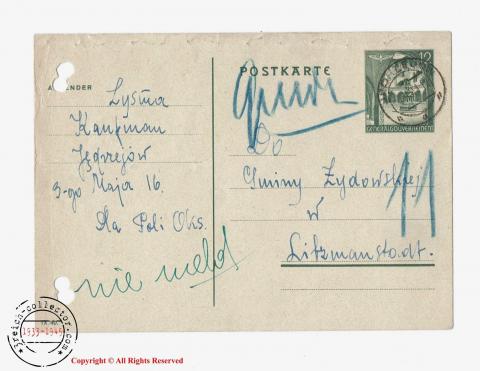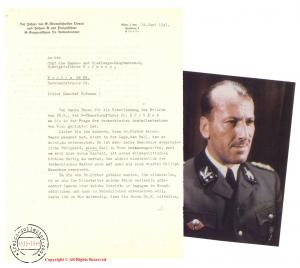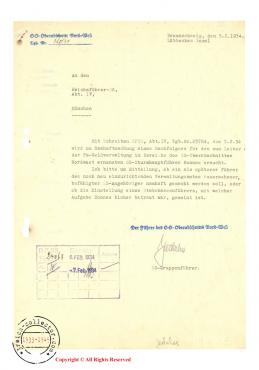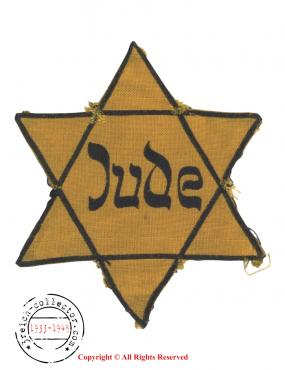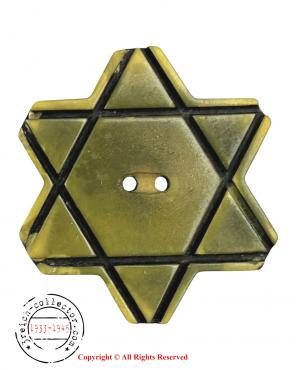Ghetto Jedrzejow - Postcard sent from ghetto in Jedrzejow to Jewish community in Litzmannstadt ghetto 1941!
| Price: | $220.00 |
Postcard sent from ghetto in Jedrzejow to Jewish community in Litzmannstadt ghetto ! 1941
In the matter of seeking an address for a family member. Sender of this postcard Zysma Kaufman was murdered.
We find in Tad vashem archives information about sender of this postcard :
Zysma Kaufman was born in Jedrzejow, Poland to Jakow and Tauba. He was single. Prior to WWII he lived in Jedrzejow, Poland. During the war he was in Jedrzejow, Poland.
Zysma was murdered in the Shoah.
https://yvng.yadvashem.org/nameDetails.html?language=en&itemId=3604421&i...
GETTO JEDRZEJOW
In the spring of 1940, the Germans established a ghetto in Jędrzejów, located at Pińczowska and Łysakowska streets. In November 1940, 4,200 people stayed here, and in 1941 - 3,600 Jews. In 1942, the number of Jews increased from 3,520 in March to 6,000 in September. It resulted from the resettlement of Jews from Lelów (382 people) to Jędrzejów, Małogoszcza (in two stages - 830 people in August and 300 in September), Mierzwina (126 people), Nagłowice (152 people), Nawarzyc (193 people), Prząławia ( 136), Sobkowa (600 people).
The situation in the ghetto continued to deteriorate.
The Germans felt impunity for the situation [...], one of them was known for cruelty. His name was Kap. When he went out into the street, it was known that someone would fall victim to him. He was a sadist [...] he saw a Jew, a beggar or another killed ... he returned to himself [...] finally the guerrillas decided to put an end to this. At the end of the summer of 1941, they kidnapped Kap and another Nazi, led them out of town and killed them both. In retaliation, the Germans arrested 10 people from the intelligentsia and shot them.
[...] Men were taken for various works. Jews were shot under any pretext. In 1942, September was very beautiful [...] we went together to the house of prayer, which was located at Pińczowska Street [...] but soon after the Yom Kipur festival the extermination [...] came two days before the liquidation Kielce to take bribes.
[...] [Germans] encircled the ghetto and immediately began to drive people from their homes to the market square, which stretched down from Łysakowska Street and bordered the ghetto area. The Jews stood crowded in the square [...] Everyone was taken to Treblinka, someone managed to escape, returned to Jędrzejów and told how and when the Jews were killed. "
The Germans liquidated the ghetto on September 16, 1942. At that time, former residents of Brzegów, Lelów, Małogoszcza, Nagłowice and Sobków were taken to the German Nazi extermination camp in Treblinka.
The Germans immediately after the liquidation of the ghetto formed a small ghetto in which they detained about 100 people [...] in addition to employees of the railway station, also members of Jewish militia.
In February 1943, the Germans liquidated the so-called a small ghetto, transferring its inhabitants to German labor camps at the Hugo Schneider Aktiengesellschaft Metallwarenfabrik (HASAG) ammunition factories in Skarżysko Kamienna and Częstochowa.
